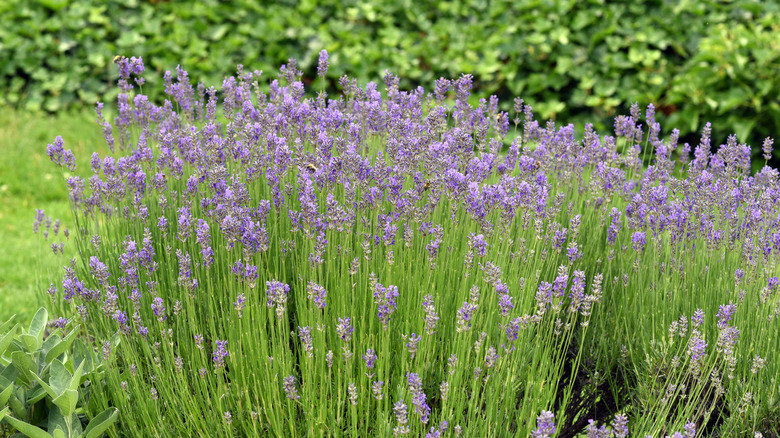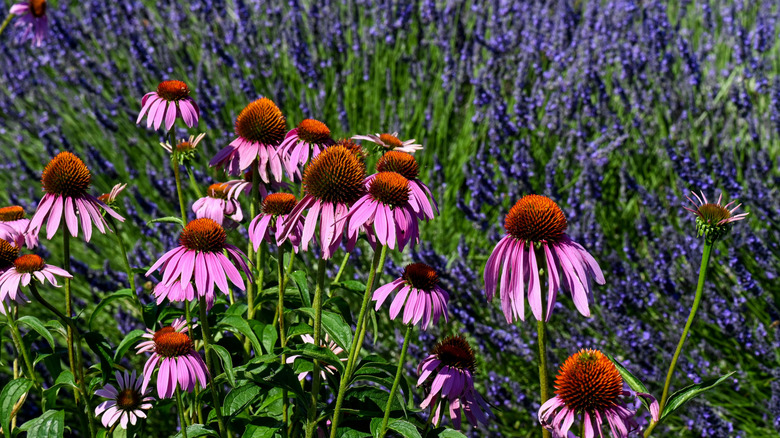The Stunning Flower You Should Be Growing Next To Lavender In Your Garden
Lavender is popular in gardens for its silvery foliage and soothing scent. Loved for its fragrance, lavender is often used for aromatherapy and in many culinary recipes. There are 45 species and more than 450 varieties of lavender that offer a wide array of bloom times and flower colors. Choose the right species for your area, and lavender can be grown just about anywhere, either as an annual or a perennial. Its benefits are seemingly endless. Did you know that lavender was used during World War I to disinfect the floors and walls? It has a long history of being a helpful and well-loved plant. It is also less prone to disease and insect problems than other herbs, which may reduce the need for chemicals in the garden.
If you are wondering what to plant near lavender, consider Echinacea (Echinacea Moench). Often referred to as the coneflower, echinacea is suitable for USDA hardiness zones 3 to 9. Growing and caring for the coneflower is simple. They are slow-growing and can be divided. This perennial is native to eastern and central North America and is known for its striking, daisy-like blooms that stick around all summer and into early fall. At the center of each flower is a bold, raised cone made of tiny, packed florets, giving them that signature spiky look. Around the cone, you'll find colorful petals in shades of purple, pink, orange, red, yellow, or white, depending on the type you're growing. Lavender and coneflower placed together creates a resilient and eye-catching garden that can attract pollinators such as birds, bees, and butterflies.
Echinacea is perfect partner for a lavender bed
As a companion plant next to lavender, echinacea is a perfect choice. It shares lavender's love of full sun and tolerates drought, which reduces water needs in your landscape. The coneflower and lavender together create an attractive and sustainable combination that supports biodiversity and reduces maintenance. By pairing plants with similar needs, you avoid overwatering or overfeeding, a common issue when mixing plants that have different growing requirements. Combining native and cultivated plants with overlapping bloom times also offers continuous food for bees and butterflies, keeping your garden lively and productive throughout the season. Lavender and echinacea are both easy to grow and will look stunning with little effort on your part. They are a great combination for a busy gardener.
As previously mentioned, lavender and coneflower will attract birds and bees. If you are looking for additional tips to consider when starting a pollinator garden, group plants with similar needs so maintenance is easy and water use is efficient. Help pollinators find your garden by planting in groups or 'clumps' rather than single plants. Incorporate plants that are native to your region as they are already adapted to the local climate and will be easily recognized by the pollinators. Use a variety of plants to support diversity in the pollinator population. Planning with intention reduces disease risk, improves aesthetics, and supports garden health naturally.

